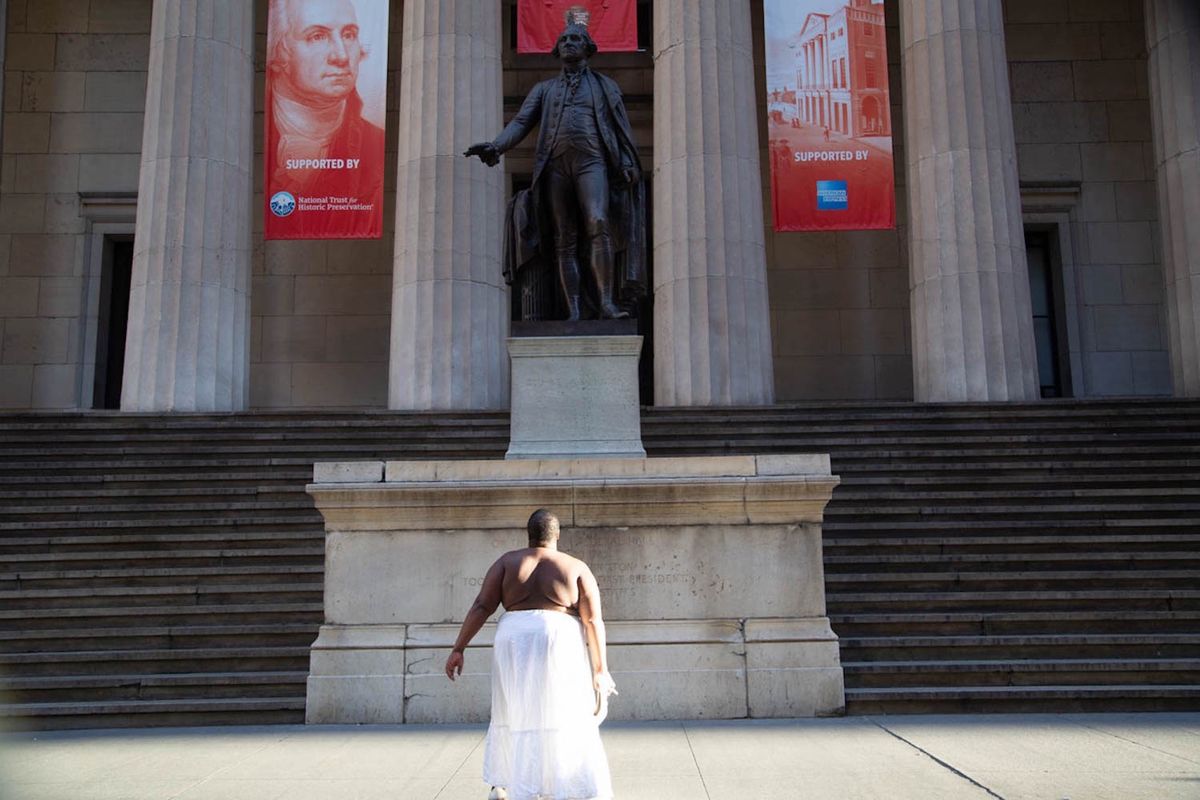Official histories of New York City tend to focus on the ways it has been and continues to be shaped by immigrants, but rarely do they mention that for more than 200 years it was the centre of the slave trade in the United States. That history, quietly acknowledged by a few small plaques and mostly-understated monuments, is the focus of artist Nona Faustine’s powerful photographic series White Shoes (2012-21), which is the subject of a solo stand with Brooklyn-based gallery Higher Pictures Generation in the Armory Show’s Presents sector for young galleries.
Sporting white pumps and, sometimes, little else, Faustine poses at sites throughout the city that are overtly tied the slave trade, from the historic farmhouse of a Dutch slave-owning family to the Brooklyn waterfront, where slave ships once moored. Other sites are iconic locations like Federal Hall on Wall Street or Central Park, which was built following the forced removal of Seneca Village, a thriving community of free Black New Yorkers.
“There is not a place in New York City that was not shaped by enslaved and free African Americans,” Faustine says. In each image, the artist occupies multiple roles, serving as a conduit for the untold stories of generations of enslaved New Yorkers while also protesting that history and its ongoing suppression.
The artist spent nearly a decade developing the series of 20 photos, which was the subject of a book published by Mack last year. Still, she says, not much has been done within that span to redress this glaring historical blind spot in New York and beyond.
“Very little has changed except people are slightly more aware and have taken more of an interest in the history of this country and New York City,” she says. “Cemeteries are still being desecrated. There is still erasure of histories and sites all over the country.”
- The Armory Show 2022, 9-11 September (preview 8 September, Javits Center, New York.


